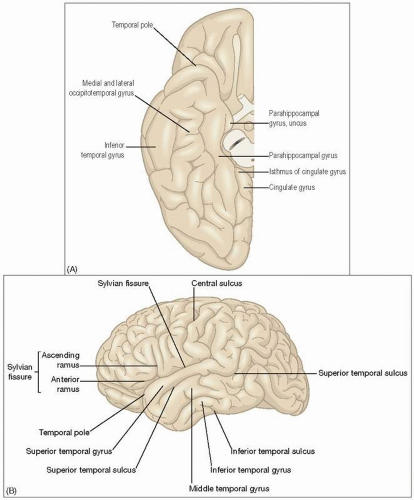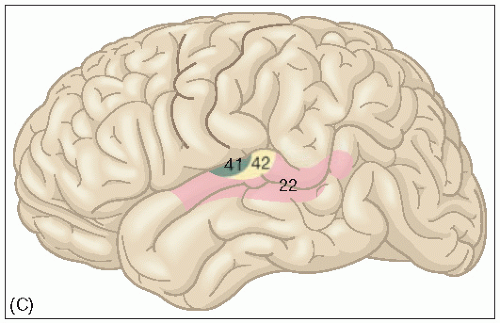Seizures of temporal lobe origin may begin with an aura. Epigastric auras are the most frequent in
TLE, described often as a ‘rising sensation’ beginning in the abdomen. Other
common auras in patients with
TLE include psychic, fear, auditory and olfactory auras. The occurrence of these auras gives some localization information, i.e. that they may begin in the temporal lobe but are not very helpful in lateralizing information, i.e. whether they begin in the right or left temporal lobe. Focal clonic movement has been found to lateralize the sympatogenic zone to the contralateral side of the movement, but these findings are not usually seen in the initial part of the seizure semiology in
TLE. In contrast, in seizures occurring in the frontal and parietal lobes, there may be an occurrence of focal motor symptoms early in their seizure evolution.
Automatisms are a prominent feature of
TLE seizures, taking many forms. Some believe unilateral motor automatisms to be of ipsilateral lateralizing value, which is most likely due to the presence of contralateral dystonic posturing masking the automatism in the contralateral limb. Oro-alimentary automatisms consisting usually of a chewing motion and lip smacking can be frequently seen in seizures of temporal lobe origin but may also occur in seizures arising outside the temporal lobe as well. Automatisms have been induced by electrical stimulation of the amygdala. Manual automatisms consist of movements involving the limbs, in which the patient appears to be fumbling, grasping, pulling at the bed sheets or manipulating an object within reach. The occurrence of motor automatisms in conjunction with dystonic posturing has been attributed to a specific primary spread of seizure discharges to subcortical brain structures and not to the seizure onset. This progression has subsequently been shown to be more common in
mTLE and has been suggested as a criterion to distinguish between
mTLE and
nTLE.
Table 5.1 lists common semiology for
mTLE and
nTLE, as well as noting differences.











